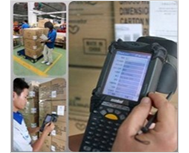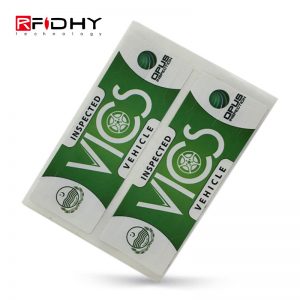How do RFID tags work? The basic working principle of RFID technology is not complicated: the reader transmits a specific frequency of the radio frequency signal through the transmitting antenna, and generates an induced current when the electronic tag enters the effective working area, thereby obtaining energy, and the electronic tag is activated, so that the electronic tag encodes itself. The information is sent out through the built-in RF antenna; the receiving antenna of the reader receives the modulated signal sent from the tag, and transmits it to the reader signal processing module via the antenna adjuster. After demodulation and decoding, the valid information is sent to the background host system. Correlated processing; the host system identifies the identity of the tag according to the logical operation, and performs corresponding processing and control for different settings, and finally issues a command signal to control the reader to complete the corresponding read and write operations.
According to the presence or absence of power, it is divided into passive and active:
Passive Tag:
The Passive sensor itself has no power supply. The power supply is from the Reader. The Reader emits a frequency to make the sensor generate energy and return the data to the Reader. The volume is relatively light and short, and has a long service life. The sensing distance is short.
Active Tag (active): The price is higher. Due to the built-in battery, the volume is larger than the Passive tag, and it has a long service life and a long sensing distance.
According to the frequency, it can be roughly divided into three categories: LF, HF and UF:
Low Frequency: 100~500 KHz The low-frequency sensing distance is short and the reading speed is slow. It is mainly 125 KHz and has good penetration ability.
High Frequency: 10~15MHz The sensing distance of the high frequency is slightly longer, and the reading speed is also faster than the frequency, which is mainly 13.56MHz;
Ultra-High Frequency/Microwave: Between 850 and 950 MHz (UHF) and 2.45 GHz, the sensing distance is the longest, the speed is the fastest, and the penetration is poor.
RFID application
As a data carrier, electronic tags can play the role of identification, item tracking and information collection. In foreign countries, electronic tags have been applied in a wide range of fields. The RFID system consisting of electronic tags, readers, antennas and application software is directly connected to the corresponding management information system. Every item can be accurately tracked. This comprehensive information management system can bring many benefits to customers, including real-time data collection, secure data access channels, and all product information offline. Wait. In foreign countries, RFID technology has been widely used in many fields such as industrial automation, commercial automation and so on. Applications include:
Product anti-counterfeiting
Valuables management
Access control / identification
Material/product tracking
Personnel item location
Transportation and distribution
Air baggage tracking
Electronic traceability, food traceability
Railway transportation management system
Warehouse management, intelligent warehouse management
Electronic Article Surveillance (EAS), Clothing Retail Store Export Management
Anti-theft management, unauthorized use management or asset management of valuable equipment
Vehicle, parking lot and gas station, warehouse facility management
Automatic collection of passing bridge fees
Access control management for important and dangerous occasions
Conference and Timing – Typical Applications
Automatic identification of CNC machine tools
Product quantity and process control in flexible processing systems
Surveillance of suspects
Vehicle anti-theft system and car ignition system
Intelligent library, lease product management
Application management of car theft and keyless door opening system








